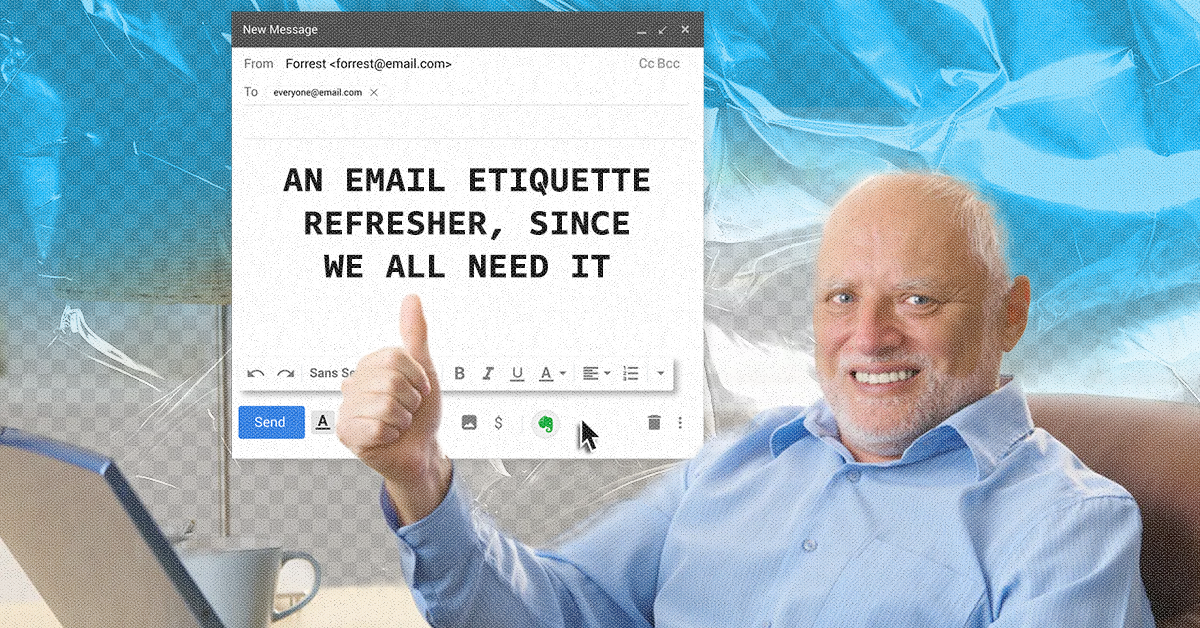No matter your age, we all need an email etiquette refresher
If you’ve spent a lot of time on the bird app, you might know that one of the hottest topics to take over our local Twittersphere is the topic of emails and etiquette. While the supposed originator of the discourse pinned the pitfalls on Gen Z, there’s no denying that we also experienced some Boomers who reply with, “Ok. Sent from my iPhone” to a perfectly crafted email. There are a lot of sides and arguments that came about, but I’m not here to outline them one by one. Instead, allow me to give an email etiquette refresher for those who need it, regardless of your generation and how old you are. Let’s be real—we all need it.
1. Plug your subject line
While there’s no saying that your recipient will or won’t read your email, there’s no harm in giving them a heads-up through the subject line. This quickly helps them determine if it’s urgent and filter it according to their folders. Is it an assignment due? Mention the course it’s for. Does the email contain an inquiry on rates? Say what’s it for. A little context won’t hurt anybody, so add it to the most visible part of the inbox.
2. Have a proper opener
Email etiquette is just like a conversation IRL, especially as an opening to a professional relationship. So do what you usually would in such situations: greet them nicely. Avoid using, “To whom it may concern.” You should already know who you're addressing when typing that email. A short, “Hello, [insert name here]! How have you been?” Or, at the very least, address your recipient with “Dear [insert name here],” which will leave a great impression. Doing so will make you engaging to speak with, leading to better opportunities. Of course, you can drop this once the professional relationship has been established or it’s an ongoing email thread. But it's best to leave it in if it’s touching base, the start of a conversation or following up.
RELATED: Google Sheets Templates to Help You Get Your Life in Order
3. Keep the body compelling but concise
Here’s another item in the email etiquette refresher: sending this out means being mindful of the recipient’s time. Long emails should be a rarity and not the norm. After the opener, get straight to introducing yourself and why you’re getting in touch. Once you’ve briefly explained your purpose, mention what you hope to get from the interaction and any attachments needed. Keeping it short and sweet, ideally between three to four lines of messages, also helps avoid any critical information from being missed down the line. Don’t forget: this is an email, not a college essay or a novel. We don’t need a long deep dive before the actual thing.
4. Kindly close the email
Since you’ve opened the email nicely, it’s best to close it the same way, too! Closings might be small, but using the right phrase and sign-off also leaves a great impression—especially if this is the first email you’re sending. For example, “Looking forward to hearing from you” shows genuine interest. Meanwhile, “Let me know what you think” also invites the recipient to reply and explore other beneficial options for the conversation.
Of course, don’t forget to sign off with your name. Here are a couple of suggestions that do the trick:
- Regards
- Best regards
- Warm regards,
- Best,
- All the best,
- Thank you
P.S. Your phone settings should be able to automate a customized sign-off that isn’t “Sent from my iPhone.” Don’t forget to tinker and adjust before using the in-device mail app!
RELATED: Money Talks: Should We Really Be Openly Discussing Our Salaries?
5. Extra reminders
Language. Super formal emails might throw people off, but so do overtly casual ones. The trick to determining the language and tone you need to use when emailing is evaluating your relationship with the recipient. Are they a potential employer or client? Will your professor, boss or members of upper management read the email? Remaining cordial will put you up for consideration and keep you in their good graces.
If the email goes to your internal team where rapport has been established, and it’s a pretty casual relationship, it’s okay to unclench and drop some of the formalities. But remember: business first and puns second. Let’s not use our emails for gossip, non-work stories and whatnot. Remember, IT can see what you send.
Emojis? It depends. If you’re communicating with someone you’ve already spoken to and are professionally comfortable with, then it’s okay to drop a smiley or emoji throughout the conversation. But if this is the first message between both parties, wait until a proper working relationship has been established.
Attachment names. In case this wasn’t obvious, even attachments need proper labels. Type in a proper file name so people can easily identify the item you sent over to avoid confusion. The last thing you want is to send the client a file named “Let This Be The Last.png,” right?
Following up. How soon is following up via email? For a job interview, give it four to five working days before sending another email. Two to three business days should be fine if it’s for an inquiry or with a client.
Hedging. Everyone knows it’s still hard to determine someone’s tone through digital communication, so we try to keep our tones neutral when writing an email. But sometimes, in our effort to sound less bossy, we do hedging or overuse cautious language. In email etiquette, however, clarity, conciseness and confidence should be the priority. So drop “I think that,” “Maybe we should,” or “I feel like” when making a point. Plus, sounding uncertain requires more words, so hedging will make a longer, harder-to-read-and-understand email.
RELATED: Some Advice to the Graduating Class, From an Aging Millennial
That’s about it for our email etiquette refresher. No matter your age, there’s no harm in reacquainting yourself with what a proper email looks like these days.
Art Matthew Ian Fetalver


















